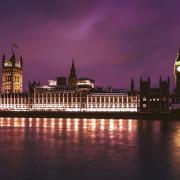
Does it come as a surprise to know that four in five Trans children and there in five Gay, Bi, and or Lesbian children – who aren’t Trans – have committed self-harm? (Stonewall, 2017) Would it come as a surprise to find that is nearly ten times more than the national average – given its one in twelve? (Young Minds, 2020) Finally, would it come as a surprise to you that 88.9% of Trans youth have had suicidal thoughts while it is 59.4% for their Cisgender counterparts? (Nuno Nodin, 2015)
If any of these things did come as a surprise to you, or they shocked you, or even if you just don’t care, there should be an overshadowing feeling of frustration, remorse, and maybe even guilt. You may be combating the question “how could I feel guilt for something that isn’t my fault” but that question in and of its own is the problem. You may not be inciting these horrific thoughts in these poor and misunderstood young people but what are you doing to stop it? How are you keeping the 48.1% of Trans youths that have had a suicide attempt from stopping? (Nuno Nodin, 2015) No one is wanting or asking for anything more for LGBTQIA+ youths but if the numbers are undoubtedly exacerbated in their cases, something must be wrong, something must be going wrong or maybe it’s that nothing is going on.
This year, 2020, is the first that an ‘LGBT Inclusive’ curriculum has been mandatory across all schools but what does that mean and is this all too little? This, what some have given the nomenclature, profound and others “abhorrent” mandates that in Primary School “schools should teach about different families” and that in Secondary School “sexual orientation and gender identity must be explored at a timely point, same-sex relationships should be included within lessons discussing healthy and stable relationships, and that schools should ‘be alive to issues such as everyday sexism, misogyny, homophobia and gender stereotypes’ and take positive action to build a culture where these are not tolerated”. (Stonewall, 2019) While this seems like something that should have been taught decades before, it was subsequently meet with a saddening display of hatred and disgust in an attempt to outlaw this regulation – and the time of its conception- and while it has not been it further highlights the disheartening truth that while changes are being made that can help allow young queer children a safe space to learn and grow it is the bare minimum and the second that young queer child leaves that place, they're meet back with the full force of the world and its depressing social norms and gender roles and stereotypes that, quite simply, subjugate their true nature. The outrage, synonymously, highlights how being queer in certain households is just not acceptable.
Where are these queer children meant to turn? They’re given an infinitesimal space to be themselves – which they, of course, may not out of fear of bullying which is incredibly present given nearly half of LGBTQIA+ youth are bullied (Stonewall, 2017) – but that is ‘ripped’ away from them, they’re too scared to approach their peers, and they can’t ask their families for help. Where and who can they turn to, and truthfully how could someone help?
It’s incredibly worrying to know – from anecdotal evidence – that queer youth often find themselves traversing the internet which is, plainly, a breeding ground for these children to be taken advantage of. The internet seemingly presents itself as a beautiful precipice to these young and naïve queer children but what is beyond that precipice, and what is beyond the screen of this person they have seemingly confided in? Because you have to, they have to confide in someone otherwise their likely to be combating suicide and self-harm but how much better is being manipulated on the internet than suicide? That question seems rather curt and odd as both of those things are grotesquely inhumane but in some cases, in too many cases, these are options that queer youth have batted.
As it stands, it’s hard for queer youth to be themselves at home, in school out of fear of being bullied, or online in the chance that they are being mistreated; where can they be themselves? How can they be themselves? And although it may seem rancorous, you might be wondering, how can I help? But how actually can you help?
Creating a more inclusive and safe space for queer children is not as hard and or extreme as people would have you believe, it’s no more than what you’re doing now, the only difference is that you’re aware and not nescient. Simple things like asking someone's pronouns when you feel unsure, putting your pronouns in places to show solidarity, or just not using gendered terms that might lead to someone feeling marginalised. Such a big part of helping queer youth feel accepted is eradicating ignorance and stereotypes; the world is so different and to acrimoniously disregard and be ignorant towards people’s identities is so ridiculous and capricious. Expunging your ignorance and societal stereotypes is so effortless: don’t always assume a person’s gender or the gender society deems to be their ‘normal’ partner, don’t be afraid to, politely, ask when you’re confused about someone's identity or orientation, don’t judge a person based on the fact that they do not meet society’s standard of ‘normal’ for their identity, and don’t disregard someone or something because you don’t understand or are confused about it. While this seems like a list of things you shouldn’t do, there are many things you can do to actively help, inspire, and create a safe space for young queer children: be meaningful and always use a person’s correct pronouns and or identity terms, try to make a queer person feel safe and cared for in your presence, and potentially the most important thing you can do is be an open and proud ally. A young queer person’s entire outlook on themselves and their community could be profoundly changed by witnessing a person do these things – no matter how small and or insignificant they may seem.
If everyone helped to create a safer, more accepting space for queer youth, the heart-breaking statistics this article started with could be a sad and distant memory that will allow us to look towards our beautiful bright future. No queer child should feel themselves in any of the positions described and as it stands, there are many things you can do to help stop this. Your little changes can help save a young queer person; are you willing to help create a safe environment for queer children, are you willing to educate yourself to help stop the dangerous stereotypes and societal norms that subjugate queer youth, and are you willing to help extricate a young queer life and grant them the simple freedom of existing without constraint or fear?



























